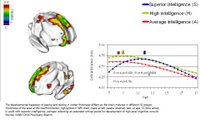 Whether jurors decide to hand down a life sentence or the death penalty depends in part on their perception of the defendant’s appearance. That’s the finding from interviews with 80 jurors during their involvement in real-life American murder cases.
Whether jurors decide to hand down a life sentence or the death penalty depends in part on their perception of the defendant’s appearance. That’s the finding from interviews with 80 jurors during their involvement in real-life American murder cases.Even after taking into account the nature of the murder, defendants who were perceived by jurors to be sorry and sincere were more likely to be sentenced to life imprisonment than to be sentenced to death. On the other hand, defendants who appeared bored or who looked frightening were more likely to be given the death penalty. That’s despite jurors being instructed to make their decision based only on the legal facts of the case.
Appropriately, the jurors’ choice of punishment was also related to the nature of the crime. They were more likely to opt for the death penalty if the victim was made to suffer before being killed, or if they were maimed or mutilated after death. Murders that weren’t premeditated were more likely to be punished by life imprisonment.
“Finding that trial outcomes are not solely the result of legal facts and evidence brought out during the trial, but are attributable to extra-legal factors, including the defendant’s appearance, may be disturbing to many who believe in the integrity of our criminal justice system…” said Michael Antonio, author of the study.
_________________________________
Antonio, M.E. (2006). Arbitrariness and the death penalty: How the defendant’s appearance during trial influences capital jurors’ punishment decision. Behavioural Sciences and the Law, 24, 215-234.
You have read this article Forensic
with the title April 2006. You can bookmark this page URL https://psychiatryfun.blogspot.com/2006/04/how-to-avoid-death-row.html. Thanks!




















